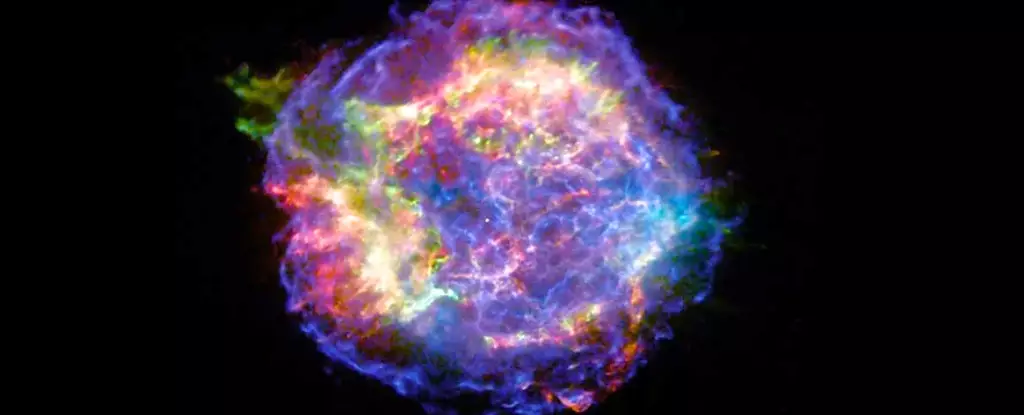Richard Feynman once pointed out that if there were just one scientific truth to be passed to future generations, it would be this: everything is made of atoms. This seemingly simple statement holds profound meaning. Atoms are the fundamental units that compose all ordinary matter—essentially, all the substance that has mass around us. Yet, understanding how these minuscule structures originated and came to be the constituents of our world invites a fascinating dive into the cosmos, spanning the birth of the universe to the violent deaths of stars.
Atoms are not just solid, unchanging bits of matter; each atom has a complex internal structure. At the center of an atom lies the nucleus, a dense cluster of particles called protons and neutrons. Positively charged protons and electrically neutral neutrons form this core. Whirling around this nucleus is a cloud of electrons, far lighter particles carrying negative charge. The balance between the number of protons and electrons ensures that atoms are electrically neutral overall. The count of protons defines the element itself—for example, hydrogen, the simplest element, has one proton, while helium has two.
From the Big Bang to Atomic Beginnings
The origin story of atoms starts roughly 14 billion years ago with the Big Bang — the colossal event marking the universe’s inception. In the scorching aftermath, the universe was a dense, hot plasma of elementary particles. For the first several minutes, protons and neutrons collided at dizzying speeds, fusing into light nuclei like helium and a heavy form of hydrogen called deuterium. But these nuclei couldn’t immediately form stable atoms because the universe remained an intense inferno; electrons were too energetic to settle into orbits.
It took nearly 400,000 years for the universe to cool enough—down to about 5,000 degrees Fahrenheit—for electrons to finally combine with nuclei in a process historically called “recombination,” though this name is misleading since it was happening for the first time. This moment marks the birth of the first true atoms, mostly hydrogen and helium, which today still dominate the visible cosmos, making up roughly 98% of ordinary matter.
The Cosmic Crucibles: Stars and Their Role in Forging Matter
The universe’s earliest atoms, however, are just the beginning. Everything around us—the oxygen we breathe, the carbon in our bodies, the iron in the blood—consists of heavier elements forged in the intense furnaces of stars. These stellar crucibles provide the extreme pressures and temperatures needed to smoosh protons and neutrons together, overcoming their natural repulsion.
Inside stars more massive than our Sun, nuclear fusion chains elements from carbon up to iron through repeated collisions. The “strong force,” a fundamental interaction much stronger than electricity at tiny scales, binds protons and neutrons tightly once they get close enough. Yet, fusion within stars inherently stalls at iron and nickel because beyond these, creating heavier elements demands more energy than it releases.
Violent Star Deaths: The Birthplace of the Heaviest Elements
The universe requires violence to create elements heavier than iron, and it gets it in the spectacular deaths of massive stars. When such a star exhausts its fuel, its core implodes in a fraction of a second. The ensuing supernova explosion is one of nature’s most powerful spectacles, producing enough energy to forge precious metals like gold and platinum and dispersing these ingredients throughout the cosmos.
But supernovae are not the only venues for heavy element formation. Recent astrophysical research highlights collisions between neutron stars—ultra-dense stellar remnants—as critical factories forging some of the heaviest elements. These events unleash cataclysmic energy, propelling new elements across galaxies and contributing to the chemical diversity necessary for planets and life.
Beyond Atoms: The Mysteries Still Awaiting
Delving into atomic formation inevitably brushes against broader cosmic enigmas. Not all matter in the universe is atomic; a vast majority is the elusive “dark matter,” invisible and fundamentally different from the atoms that make up stars, planets, and people. Though atoms have been studied extensively, dark matter continues to resist understanding, suggesting that the story of matter is far from complete.
The journey from elementary particles after the Big Bang to the complexity of atoms and heavy elements is a narrative that highlights nature’s grandeur and subtlety. It crosses disciplines from nuclear physics to astrophysics and challenges human understanding at every turn. For anyone who marvels at the universe, knowing that the atoms in our bodies were born in stars and cosmic cataclysms instills a sense of profound connection to the cosmos—as we are literally made of star stuff.

